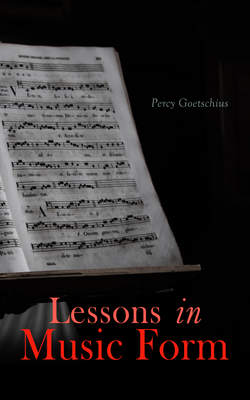Читать книгу Lessons in Music Form - Percy Goetschius - Страница 9
На сайте Литреса книга снята с продажи.
[Illustration: Example 2. Fragment of Beethoven.]
ОглавлениеTable of Contents
Compare the groups marked a and b, and observe how the principles of unity and variety are both active in these four measures, and how their effect is heightened by the formation of c.
(5) The figures of the accompaniment, though reproduced in uniform rhythmic values and melodic direction, undergo constant modifications in pitch and in shape, similar, to those shown in Ex. 2. See, again, No. 37 of the Songs Without Words and note the changes in the formation of the otherwise uniform six-tone groups.
LESSON 1.—The student is to study this chapter thoroughly, and write answers to the following questions; if possible, without reference to the text:—
1. What does Form in music mean?
2. Define the conditions which constitute good form.
3. When is a composition faulty in form?
4. What do discriminating listeners recognize in music?
5. What is the difference between the sounds of music and those of language?
6. How does this prove the necessity of form?
7. By what is the presence of form in music shown?
8. What is the beat?
9. What is the measure?
10. By what means are the measures indicated, (1) to the reader; (2) to the listener?
11. To what does the further multiplication of the beats give rise?
12. What are cadences?
13. What purpose do they serve in music?
14. What is the best general name for a melody?
15. What object does it fulfil in music form?
16. What are the two vital requisites upon which the enjoyment of an art creation depends?
17. What purpose does Unity serve?
18. What purpose does Variety serve?
19. What is the great problem of the art-creator?
20. Define the conditions that confirm the principle of unity in music.
21. Define the evidences of variety in music.
